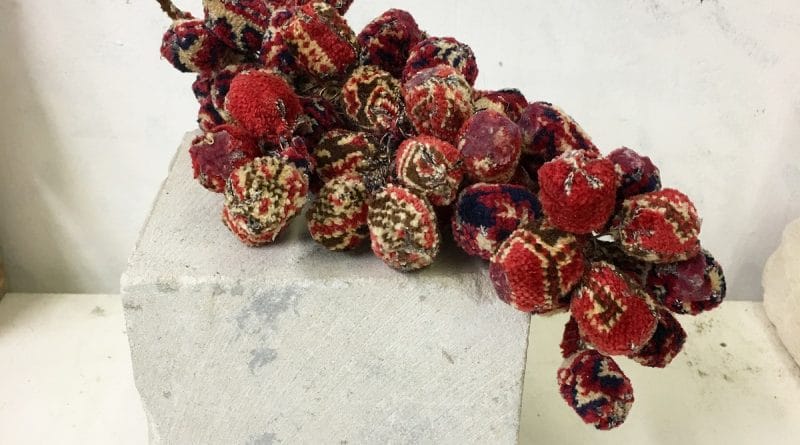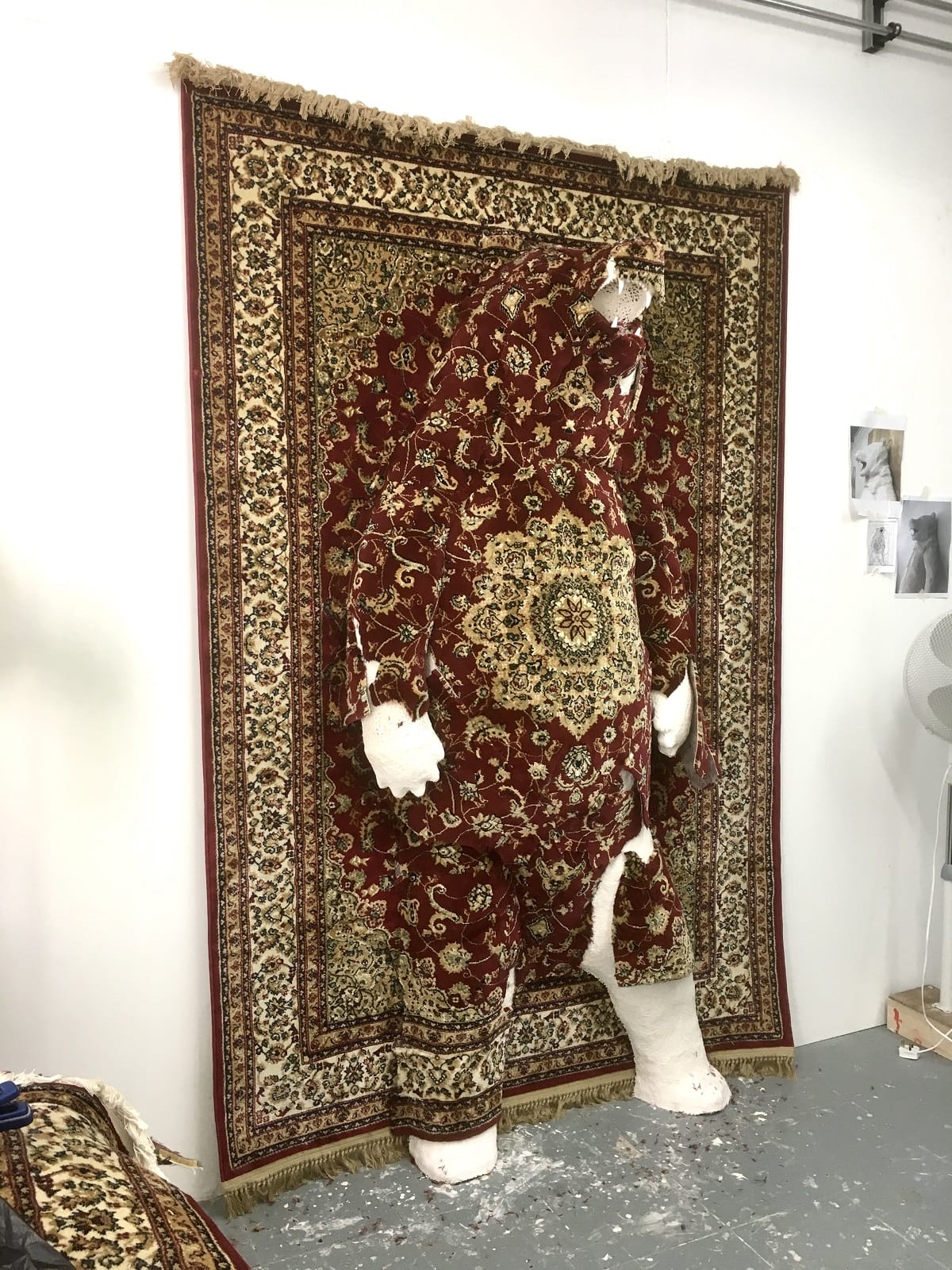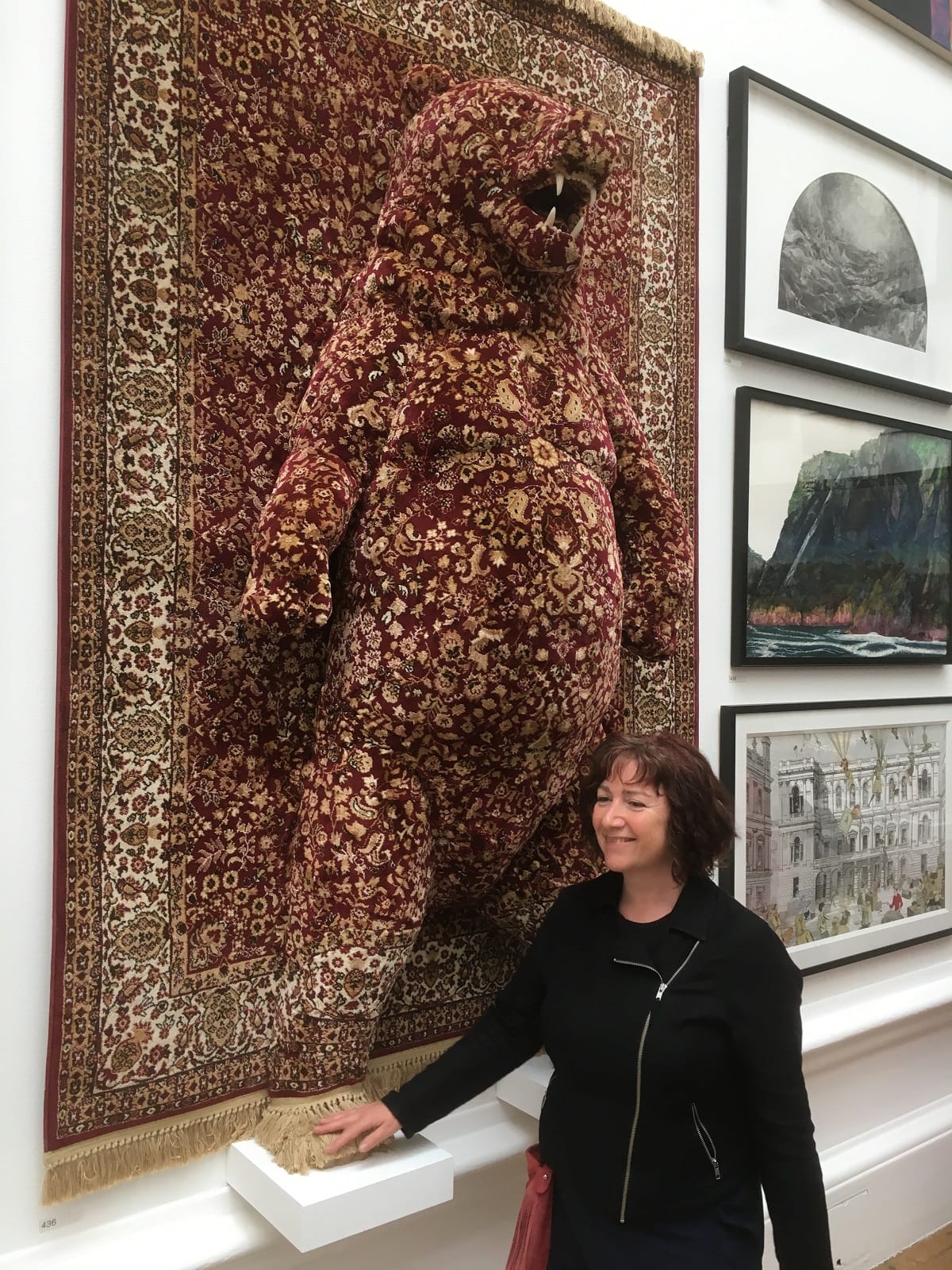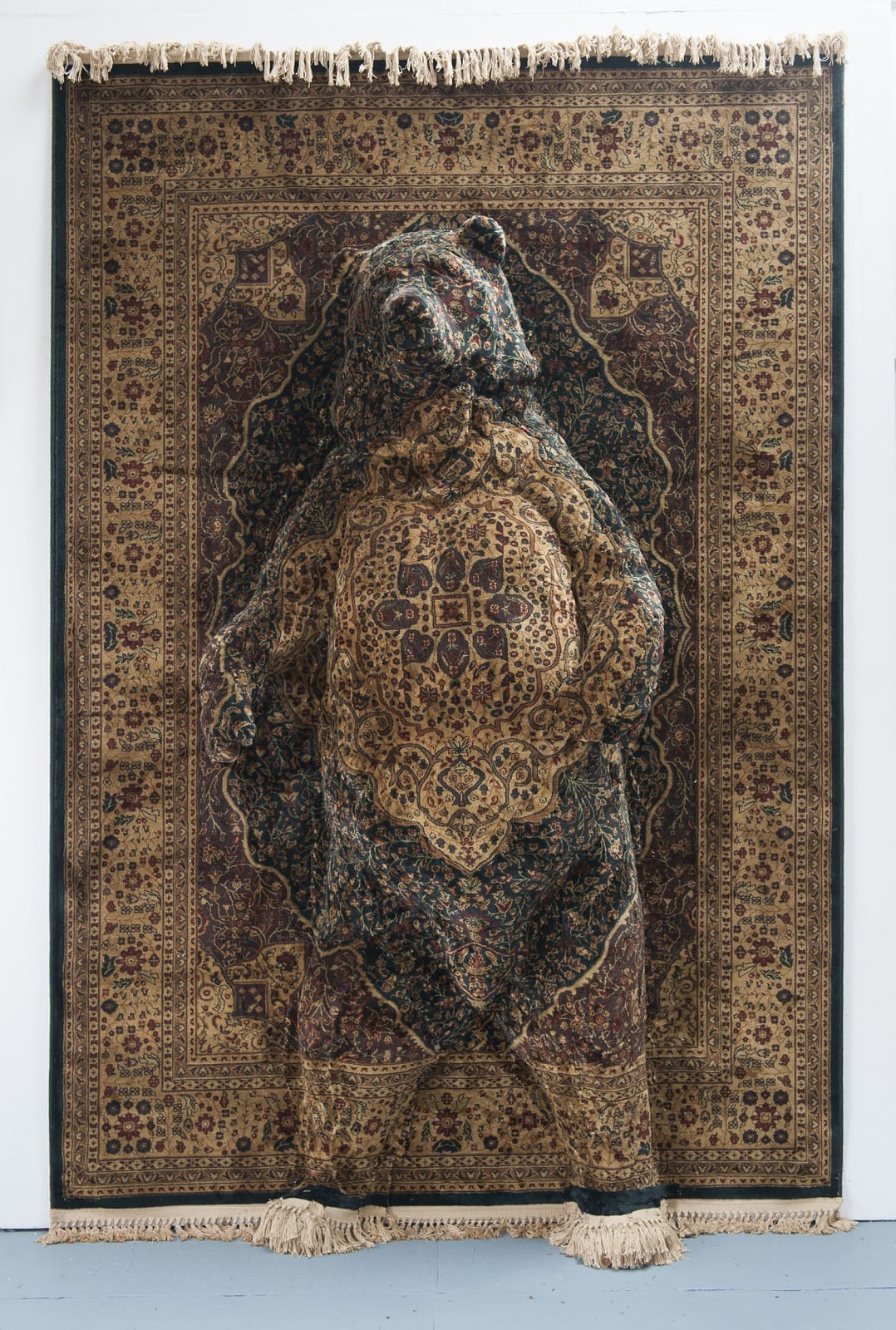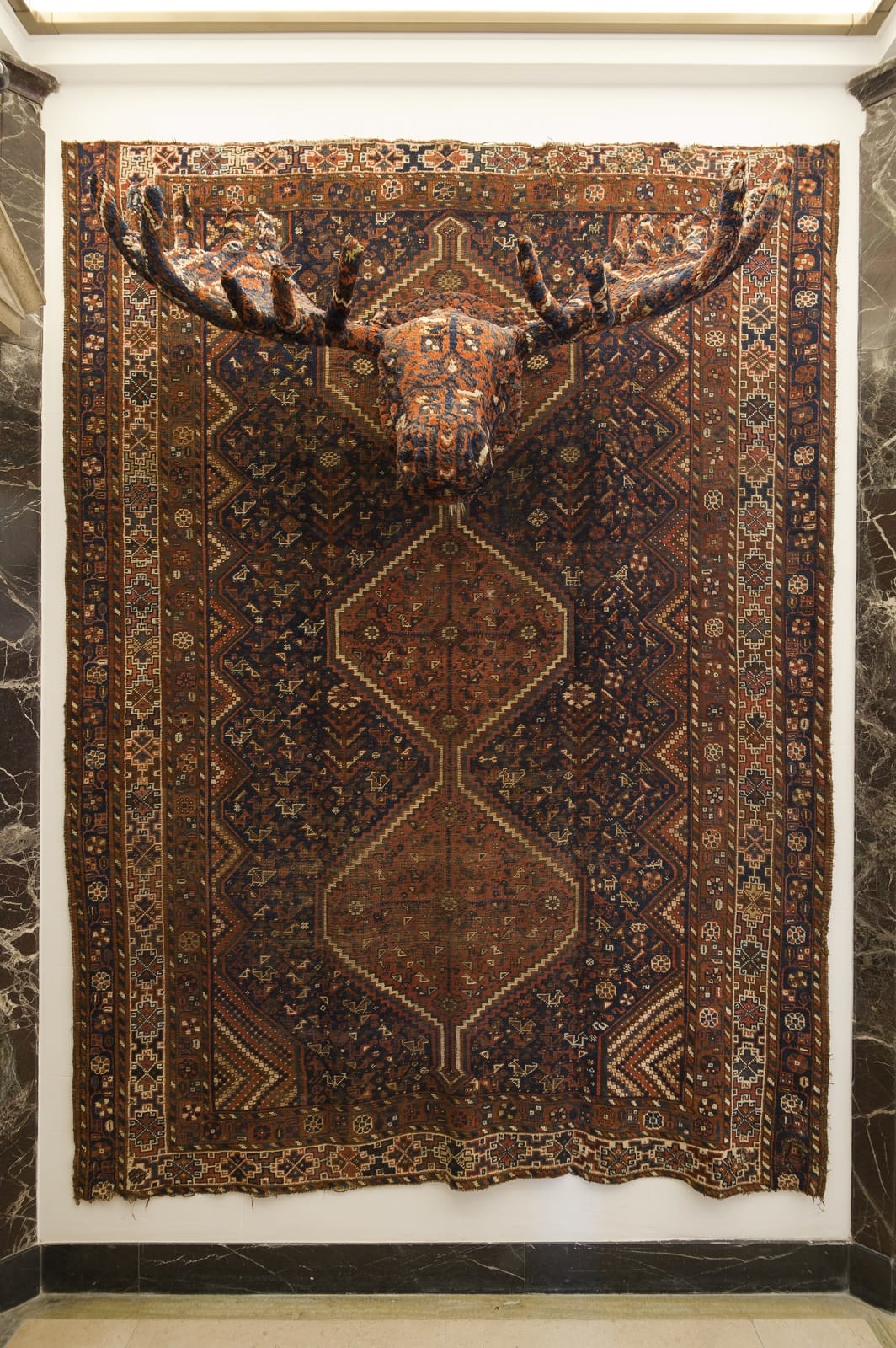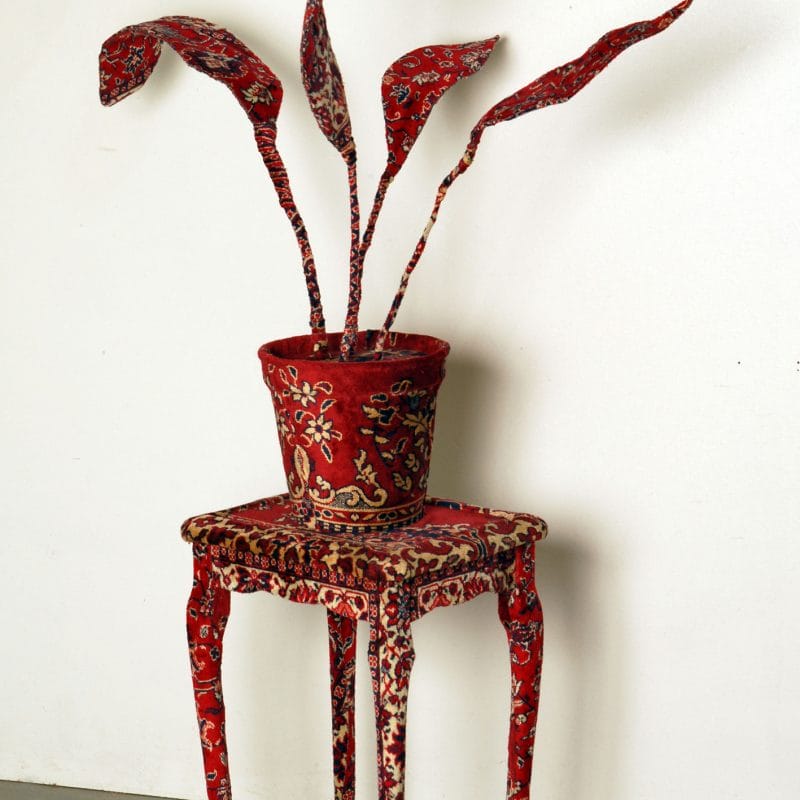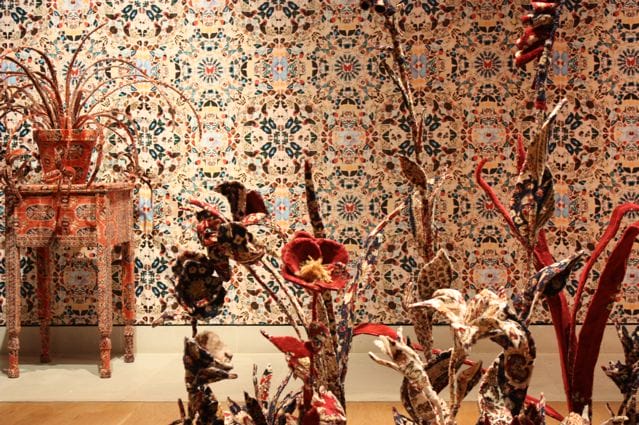Interview with Debbie Lawson
*Debbie Lawson, Shiraz Grape
Bears emerging from the living room carpet and seagulls flying from the bedroom one: Debbie Lawson’s artistic universe is fantastic yet familiar. Its roots lie in literature, the many cultures the artist has come across in her studies and travels and in in the apparent banality of everyday life. Yet, thanks to her intervention, ordinary objects become doors to an imaginary and adventurous world.
Debbie Lawson, Blue Bear (private collection, USA)
Debbie Lawson was born in Scotland and graduated from the Royal College of Art, Central Saint Martins and UEA. She lives and works in London and rural Kent. Her work is held in national and international collections including The Saatchi Gallery, The House of Lords and the University of the Arts London. Recent exhibitions include the 250th Summer Exhibition curated by Grayson Perry at the Royal Academy of Arts, London, The Ruskin Prize at the Millennium Gallery, Sheffield, Eccentric Spaces at Riccardo Costantini Gallery, Turin, and Turner Contemporary Open, Margate.
Debbie Lawson in ther London studio with a polar bear
Revealing the adventurous side of everyday objects or discovering the disturbing aspect hidden in the things we think we know: how would you define your art?
The former is more accurate. I started by taking ordinary furniture and making it dance, or grow huge, or collapse and reform when the viewer walked past. I was enthralled by books, as a child, that brought objects to life – the leaves on an enchanted tree, a magic pot of porridge – and then by films like Mary Poppins where a bedroom ‘tidied itself’. Later on, I became drawn to the gothic side of fiction, the picaresque, and folk tales: The Picture of Dorian Gray, Candide, The Arabian Nights and, more recently, The Miniaturist. Sometimes it’s the hidden life of everyday objects, and other times it’s the aspirational side, or the rebellious side.
Debbie Lawson, Tsunami
Bears, peacocks, palms and crocodiles: is the nature that creeps into our living room just a source of inspiration or does it also have a conceptual meaning for you?
If you study oriental carpets carefully, you find all manner of animals: stags, wild boars, buffalos, tigers, peacocks – but I don’t think the artist should have to adhere to a prescribed set of norms. The creatures that creep into my work started as thoughts I had while visiting the National Archeological Museum in Naples, or the Bardo in Tunis, The V&A and the Horniman in London. An academic at a university in Tehran once quizzed me about bears, assuring me that one had never appeared in a Persian carpet, but it’s never been about that! After all, those ancient motifs are filtered through centuries and different cultural contexts, and my own experience of the oriental carpet is probably coloured by its history in Britain, seen in paintings by Vermeer and Holbein, brought back from the ‘mysterious east’ by returning soldiers in Victorian times, reinterpreted by William Morris, souvenirs from the Silk Route.
Debbie Lawson, Roaring Bear (work in progress)
Oriental carpets are the favorite material for many of your works. How did this choice start?
It actually started while I was on my MA at the RCA, trying to create a three-dimensional tableau, by covering a table and two chairs in patterned linoleum. I wanted the furniture to look like it had sort of dripped out of the same pot of paint, but by using real-life materials, not trompe l’oeil paint effects. I had also tried plain-coloured carpet but that just had a 1970s boudoir look about it – a bit Hugh Hefner. I tried an oriental-style synthetic carpet out on some smaller works and then found some damaged Persian carpets which I used to make my first animal piece – a moose made using knackered old Shiraz carpets.
Debbie Lawson with Red Bear at the Royal Academy Summer Exhibition 2018
Through your work, the carpets take on a three-dimensional dimension that is sometimes even important. What is your relationship and that of your works with space?
I think of my work as quite minimalist: the pattern of the carpets is incidental, really – it enhances the form of the piece but is still a found material. I like to ‘flatten’ the image as you look at it from the front, so that when the viewer moves around it, there is a sense of animation. This is easier when the work is wall-based. I have just finished a series of work that is completely floor-based and three dimensional, and I realised how much I preferred my work to occupy the same space as me. It’s like my own private, imaginative world brought into the open.
Debbie Lawson, Persian Bear (private colleciton, UK)
How does the public relate to your works? Is there more amazement, wonder, fear or reflection among the reactions of the users who encounter them?
Some people seem to be amazed, while others express more guarded feelings. It is very telling for me when someone just ‘gets’ the work; those are the ones who don’t need to discuss it – my people!
How do you go about creating a work? Where do you start from? How long does it take on average to complete it?
It depends on the work. I can start creating a work, for myself, years before it becomes a finished piece. I’ll go back to things I started a long time ago, when they suddenly seem resolved in my mind and I know where to take them next. Commissions are another thing altogether: I begin by making a small plasticine model, then work it up into a larger scale using a very long-winded process involving chicken wire, masking tape, packing materials and, then, when I have a good shape, I cover the whole thing with Jesmonite – and finally with carpet. It can take a few months to finish a large piece. A good deal of time is spent sourcing the right carpets; I usually need three identical carpets for one large sculpture.
Debbie Lawson_Persian Moose (private collection, UK)
How important is experimenting in your artistic practice?
Process is very important to me. I enjoy getting my hands dirty, and being immersed in the feel and smell of materials. Experimenting with materials comes more naturally to me than reading instructions on how to handle them properly! Also using found materials in a different context can be quite freeing. It’s amazing what you can push materials to do when you start using them in the ‘wrong’ way.
What relationship do you have with your works?
It can be hard to part with some of my work, especially when I have lived with it for a while. Also, at the end of everything I make, even though I am happy with it there can be a tinge of regret which is what leads me on to making the next piece. I’m always striving for the perfect embodiment of an idea, and that is quite a rare thing, and it’s the reason why I will always carry on making things.
